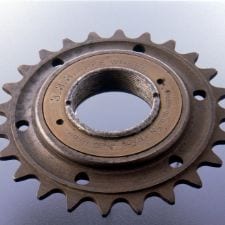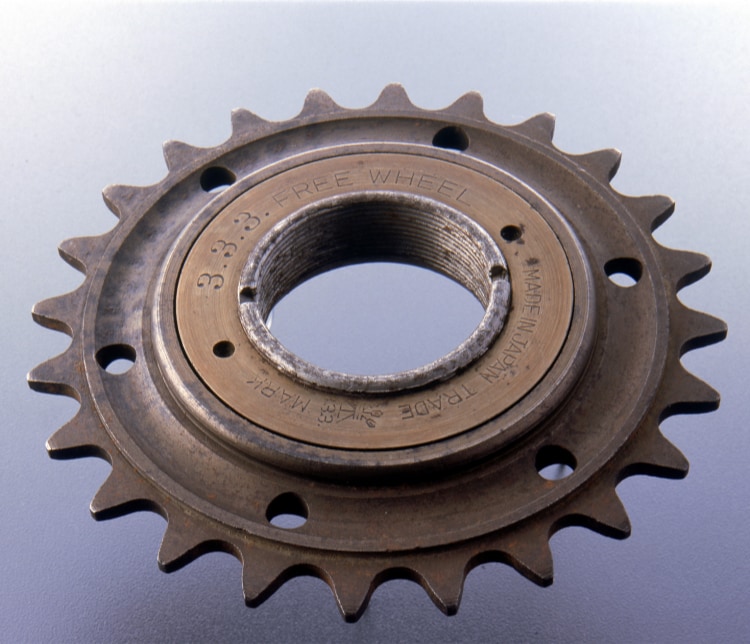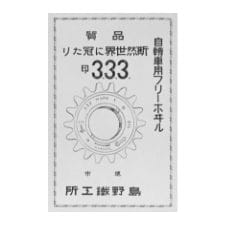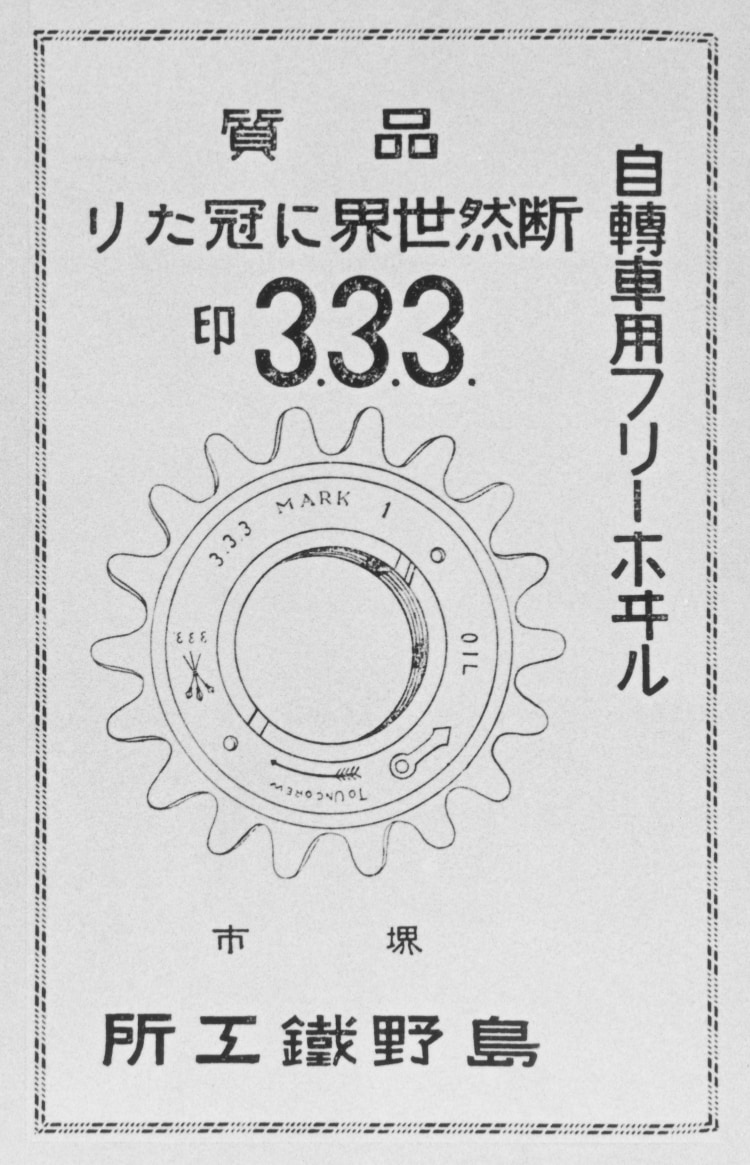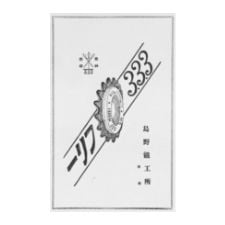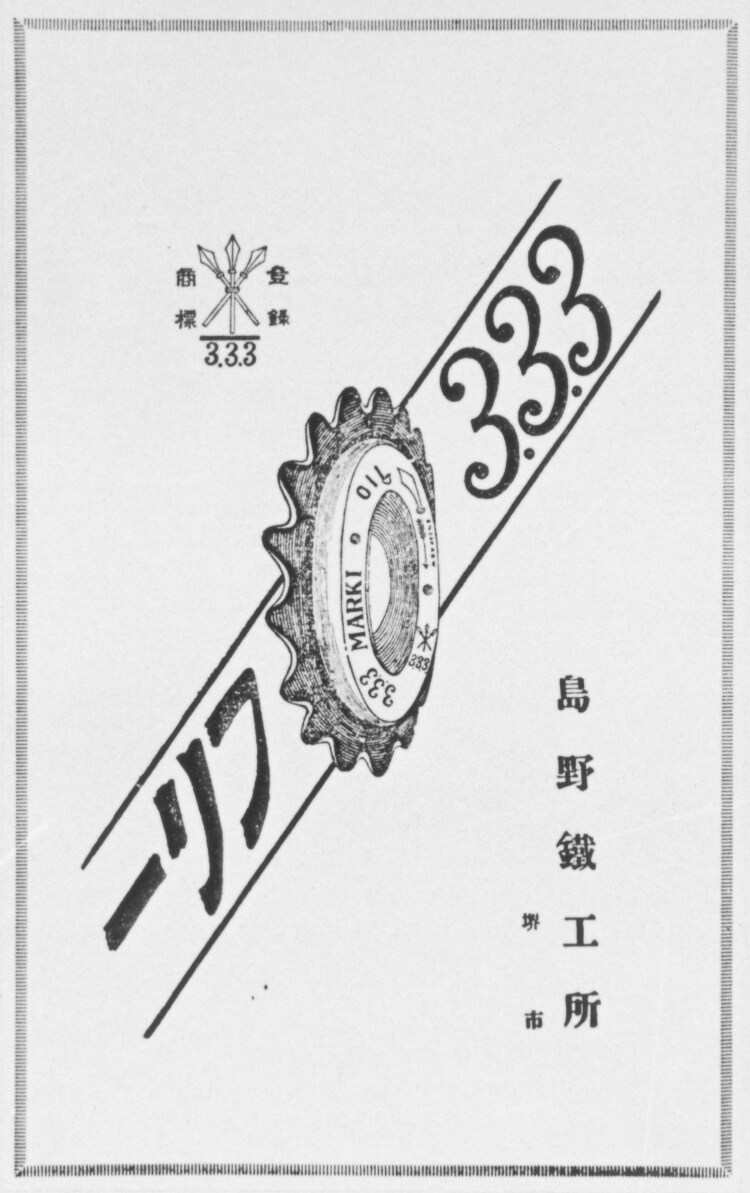STORY
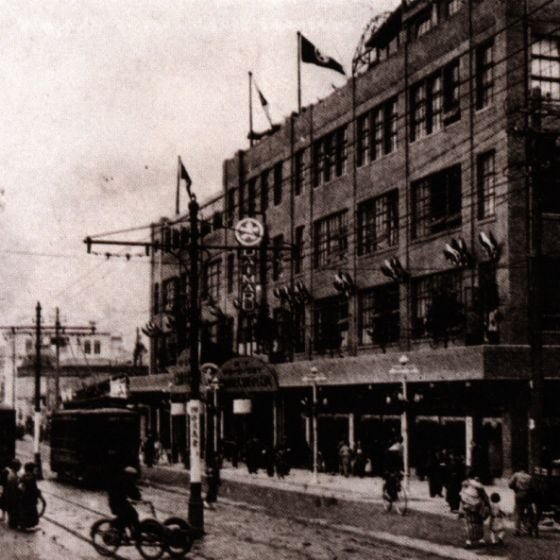
Downtown of Osaka at that time
Challenges Overcome with Technical Capabilities and Recognition of Potential
There were several reasons Shozaburo chose to produce freewheels. First, the freewheel, which could be said to have been the core component of a bicycle, was the perfect item to compete on technical capabilities. At that time, the freewheel was considered particularly difficult to produce in the bicycle industry, which was developing in Sakai, and required high technical capabilities. Second, since the specifications of bicycle components were globally common, the products could be exported across the world in the future. This was one of the major reasons. Freewheels made in Japan at that time were far inferior to imports in terms of strength, accuracy and appearance, and many of the freewheels mounted on bicycles in Japan were foreign imports.

Improvement of Heat Treatment Technology and Aspirations Reflected in the Trademark
The key to quality such as the strength, accuracy and appearance of freewheels was heat treatment. All employees worked together day and night to develop a new technology until finally, Shimano successfully developed its original technology. Furthermore, for the bearings which were used in the products, as the focus was always on quality, they were sourced from overseas even if it meant for a higher price. Shimano strived for product improvement without any compromise in this way, and at the same time simultaneously established a process of mass-producing products. Shimano continued honing the product quality, and by the tenth year of its founding, Shimano’s freewheels had been recognized for their high quality and came to be used throughout the world.
To build brand credibility in addition to improvement of the freewheel, Shimano also worked to establish its trademark. In 1922, it established its trademark, comprising three halberds and three of the numerical figure “3.” The three halberds imply the founder’s aspiration to catch up with and exceed B.S.A., a world leading British manufacturer of freewheels at that time, and “3” is derived from the founder’s first name “Sho-zabu-ro 庄三郎,” the second character of which means “three.” This trademark represented the founder’s aspiration to take on the world.
His relentless pursuit and enthusiasm for improving quality toward manufacturing the 3.3.3. Freewheel have been inherited by Team Shimano members around the world today.
To build brand credibility in addition to improvement of the freewheel, Shimano also worked to establish its trademark. In 1922, it established its trademark, comprising three halberds and three of the numerical figure “3.” The three halberds imply the founder’s aspiration to catch up with and exceed B.S.A., a world leading British manufacturer of freewheels at that time, and “3” is derived from the founder’s first name “Sho-zabu-ro 庄三郎,” the second character of which means “three.” This trademark represented the founder’s aspiration to take on the world.
His relentless pursuit and enthusiasm for improving quality toward manufacturing the 3.3.3. Freewheel have been inherited by Team Shimano members around the world today.



